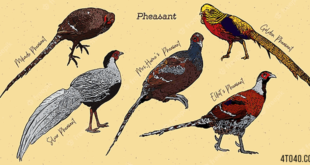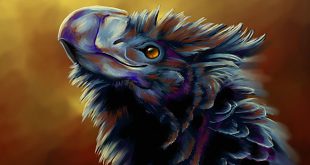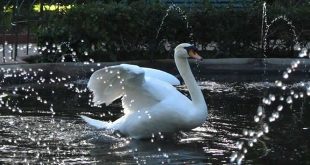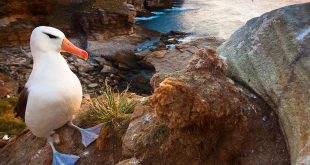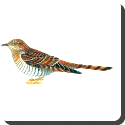 Cuckoo — The cuckoos are a family, Cuculidae, of near passerine birds. The order Cuculiformes, in addition to the cuckoos, also includes the turacos (family Musophagidae, sometimes treated as a separate order, Musophagiformes). Some zoologists have also included the unique Hoatzin in the Cuculiformes, but its taxonomy remains in dispute.
Cuckoo — The cuckoos are a family, Cuculidae, of near passerine birds. The order Cuculiformes, in addition to the cuckoos, also includes the turacos (family Musophagidae, sometimes treated as a separate order, Musophagiformes). Some zoologists have also included the unique Hoatzin in the Cuculiformes, but its taxonomy remains in dispute.
The cuckoo family, in addition to those species named as such, also includes the roadrunners, koels, malkohas, couas, coucals and anis. The coucals and anis are sometimes separated as distinct families, the Centropodidae and Crotophagidae respectively.
Cuckoos are birds of variable size with slender bodies, long tails and strong legs. The feet are zygodactyl (the two inner toes pointed forward and the two outer backward). Most cuckoos occur in forests, but some prefer more open country. Most are insect eaters, with hairy caterpillars, which are avoided by many birds, being a specialty. Cuckoos range in size from the Little Bronze Cuckoo, at 17 g and 15 cm (6 inches), to the Channel-billed Cuckoo, at 630 g (1.4 lbs) and 63 cm (25 inches).
About 56 of the Old World species and 3 of the New World species are brood parasites, laying their eggs in the nests of other birds. The best-known example is the European Common Cuckoo. The cuckoo egg hatches earlier than the host’s, and the cuckoo chick grows faster; in most cases the chick evicts the eggs or young of the host species. The chick has no time to learn this behavior, so it must be an instinct passed on genetically. The mother still feeds the cuckoo chick as if it were her own, the chick’s open mouth serving as a sign stimulus for the host to feed it.
Female parasitic cuckoos seem to specialize and lay eggs that closely resemble the eggs of their chosen host. This has also been aided by natural selection, as some birds are able to distinguish cuckoo eggs from their own, leading to those eggs least like the host’s being thrown out of the nest. Parasitic cuckoos are grouped into gentes, with each gens specializing in a particular host. There is some evidence that the gentes are genetically different from one another.
The majority of cuckoo species, including malkohas, couas, coucals, and roadrunners and most other American cuckoos, build their own nests. Most of these species nest in trees or bushes, but the coucals lay their eggs in nests on the ground or in low shrubs. Though on some occasions non-parasitic cuckoos parasitize other species, the parent still helps feed the chick.
Most of the nest-building cuckoos are monogamous, but the anis and the Guira Cuckoo lay their eggs in communal nests. Their behavior is not completely cooperative; a female may remove others’ eggs when laying hers.
Non-parasitic cuckoos, like most other non-passerines, lay white eggs, but many of the parasitic species lay coloured eggs to match those of their passerine hosts.
The young of all species are altricial. Non-parasitic cuckoos leave the nest before they can fly, and some New World species have the shortest incubation periods among birds.
Most cuckoos are insectivorous; and in particular are specialized in eating caterpillars, including noxious hairy types avoided by other birds. They will also take a wide range of other insects and animal prey. The lizard-cuckoos of the Caribbean have, in the relative absence of birds of prey, specialized in taking lizards. Larger, ground types such as coucals and roadrunners also feed variously on snakes, lizards, small rodents, and other birds, which they bludgeon with their strong bills.
 Kids Portal For Parents India Kids Network
Kids Portal For Parents India Kids Network

